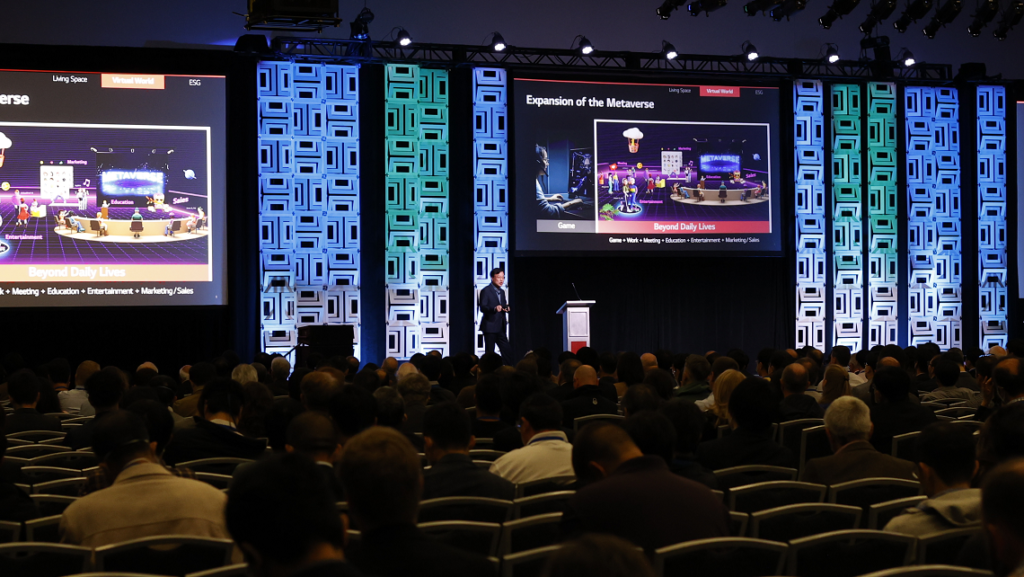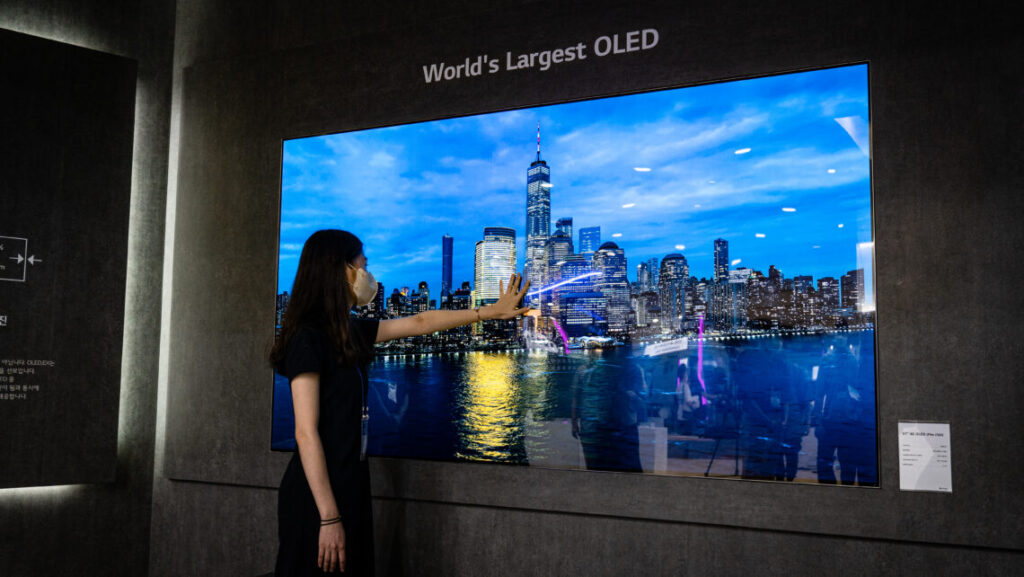As we begin the New Normal era, there are many things that are rapidly changing. Among the many different ways our daily lives have changed, we can focus on three of them: Living Spaces, Virtual Worlds, and Environmental, Social, and Governance (ESG) issues. At SID 2022, the world-renowned display technology society, Soo-young Yoon, CTO at LG Display, gave a keynote speech titled “The New Normal and Displays.” Let’s see the exciting role of displays in the New Normal era as he explained how the future will be like!

Three changes in the New Normal Era – Living Spaces
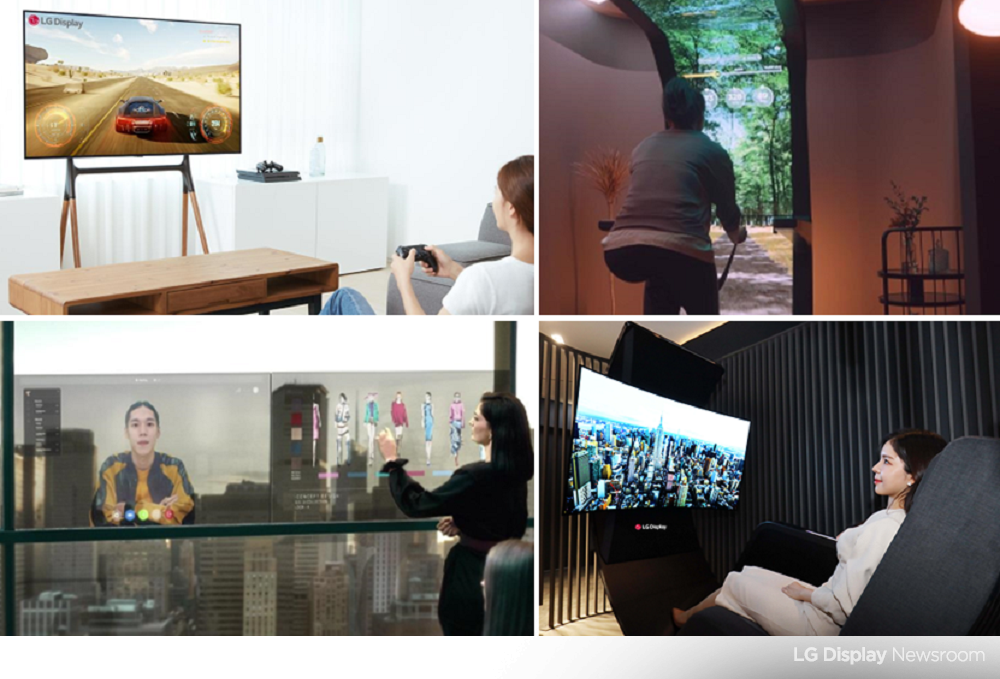
The pandemic diversified the role of our daily living space. The home, which used to be a comfortable place to relax, has now turned into an entertainment nexus for games, movies, and online shopping, and the office has become a video conferencing hub as not many people are going on business trips. It has become a space where face-to-face and non-face-to-face interactions coexist. In addition, online shopping malls, as well as offline stores, are operating unmanned.
Displays are at the center of our lives. They are unavoidable when we are working with a laptop or monitor, playing games, shopping via tablets, PCs or smartphones, or even exercising or enjoying hobbies.
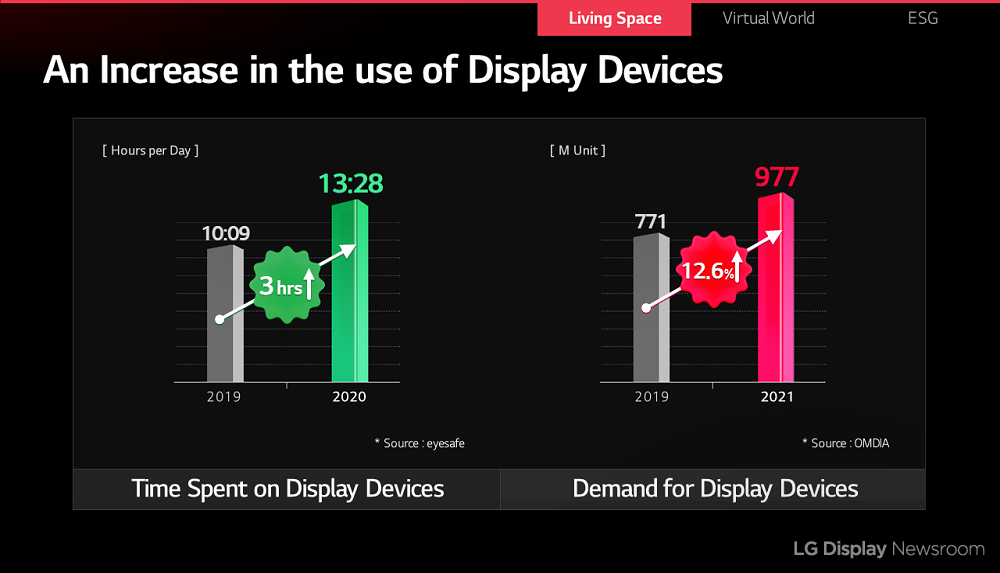
The role of displays in everyday life has expanded. As a result, display usage time has increased by more than three hours and demand for displays has increased by 12.6%, showing a significant growth rate.
Three changes in the New Normal Era – Virtual Worlds
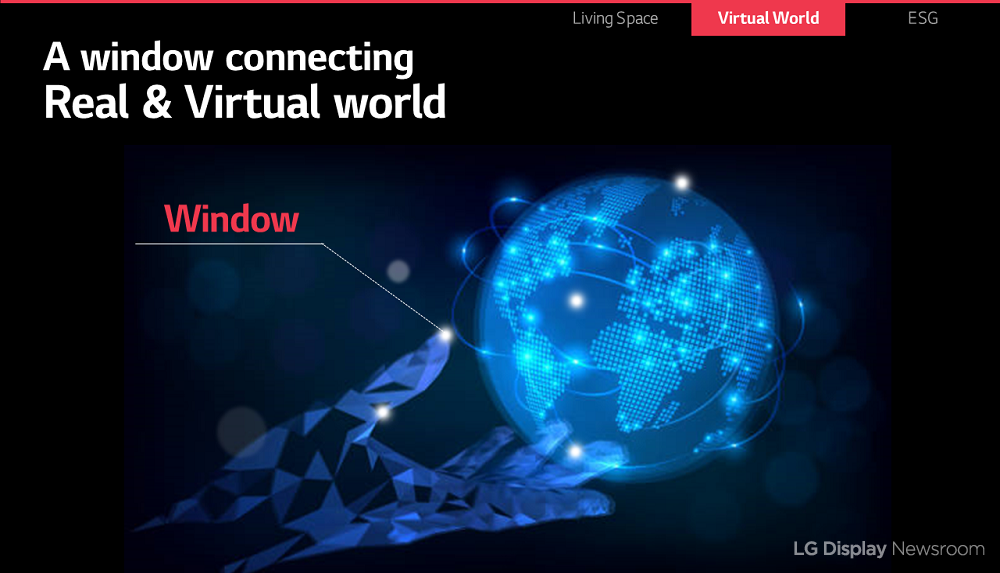
In addition, with the advancement of communication technology, the growth of personal devices, and the policy of social distancing, virtual worlds are being used more often in our everyday lives. In particular, the metaverse trend has accelerated as non-face-to-face communication has become commonplace and indoor living time has increased. As a result, the idea of a metaverse, which was attracting attention only as a simple game platform, is now growing into a platform for various industries such as concerts and brand marketing. In this case, the importance of displays as a medium between real and virtual worlds is increasing.
Three changes in the New Normal Era – ESG Issues

The environment is something that we must continue to be aware of as technologies keep on developing. Consumer perception of the environment is also growing, with 70% of consumers responding that they feel that the environment has become more important since the start of the pandemic. This trend is especially noticeable in the younger age group — Generation Z. As consumer awareness of the environment and its related regulations are strengthened, many global companies are declaring their eco-friendly qualities.
In this era, the diversification of living spaces, expansion of virtual worlds, and the growing importance of the environment are all drawing attention. As the importance of displays in our daily lives is going up, we need a new display that takes into account all of these factors.
New paradigm of displays – Natural Reality
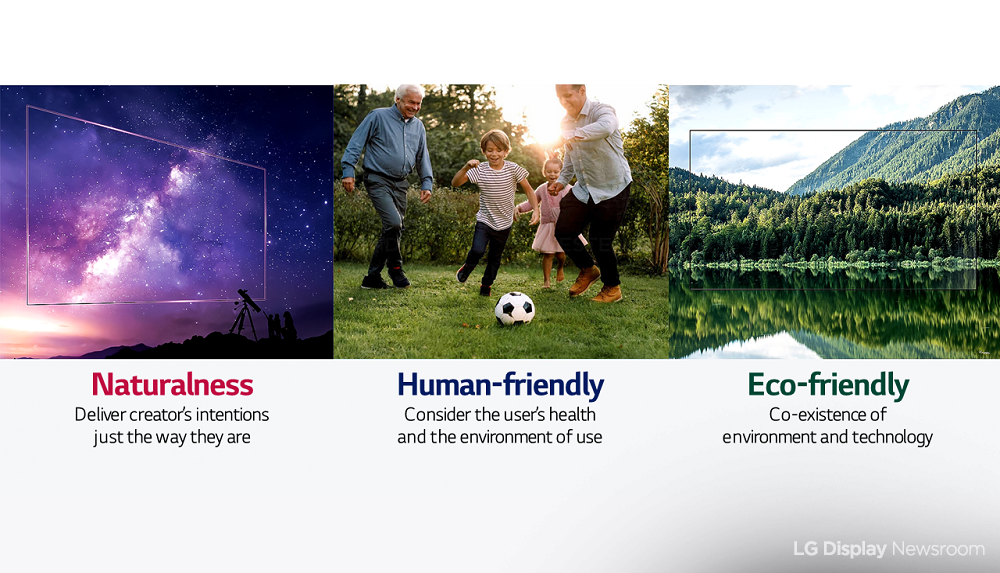
Most previous display advancements were spec-oriented. Displays developed from black and white to color, higher resolutions, and thinner bodies. But now, the display paradigm must also change from being spec-oriented to people-oriented — in line with the changing era. What is a people-oriented display? It can be defined as having Natural Reality, conveying the full experience of nature in harmony with the environment. LG Display’s OLED focuses on people through Natural Reality. The three qualities of Natural Reality are Naturalness in conveying the original author’s intent, Human-friendliness in both health and usage, and Eco-friendliness in tune with the environment.
The first feature of Natural Reality – Naturalness in conveying the original author’s intent
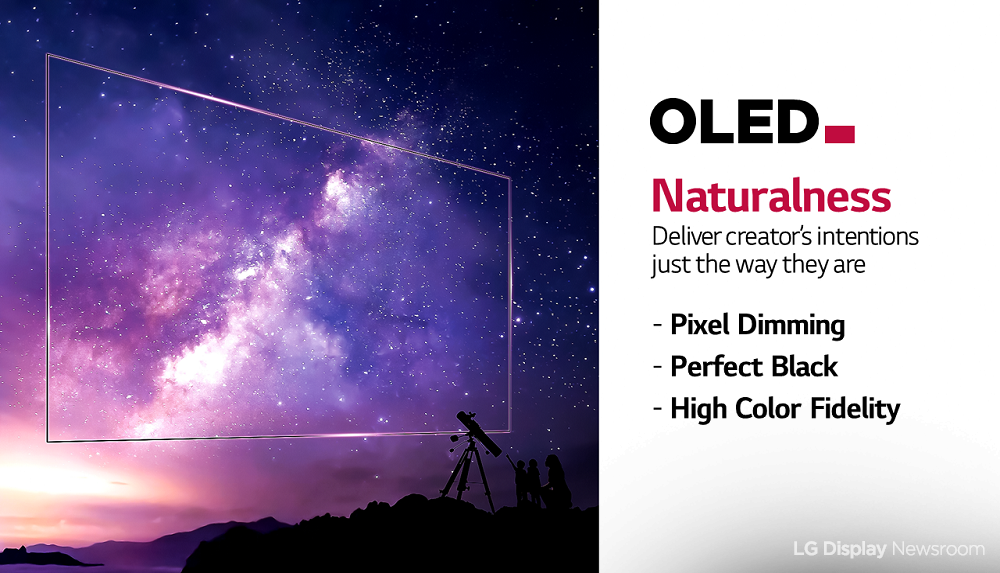
The first quality of Natural Reality is Naturalness. In the context of displays, Naturalness refers to delivering the original author’s intent without distortion, loss, or exaggeration. To do so, being able to express true black is critical, especially in an illuminated environment. This is the only way to truly realize the colors that the creator originally intended with high accuracy. LG Display’s OLED can implement all three of these characteristics better than LCD.
The second feature of Natural Reality – Human-friendliness in both health and usage
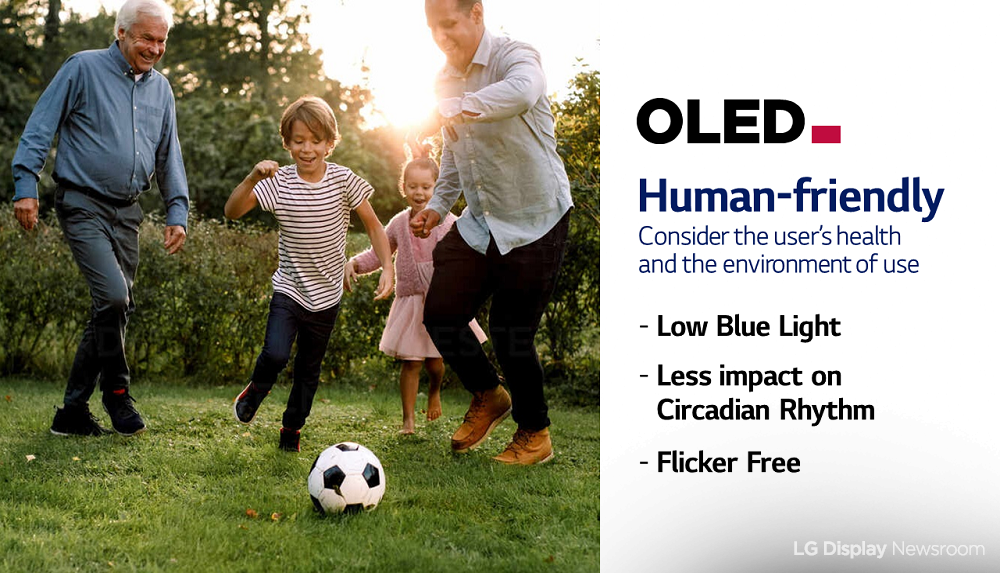
The second element is Human-friendliness, which takes into account both the user’s health and usage environment. Eye-poisoning blue light and the flicker phenomenon have been pain points plaguing display users for a long time.
That is why LG Display developed OLED that boasts low blue light and being Flicker Free. OLED has a low blue light, which is defined by global certification authority TUV Rheinland.
The third feature of Natural Reality – Eco-friendliness in tune with the environment
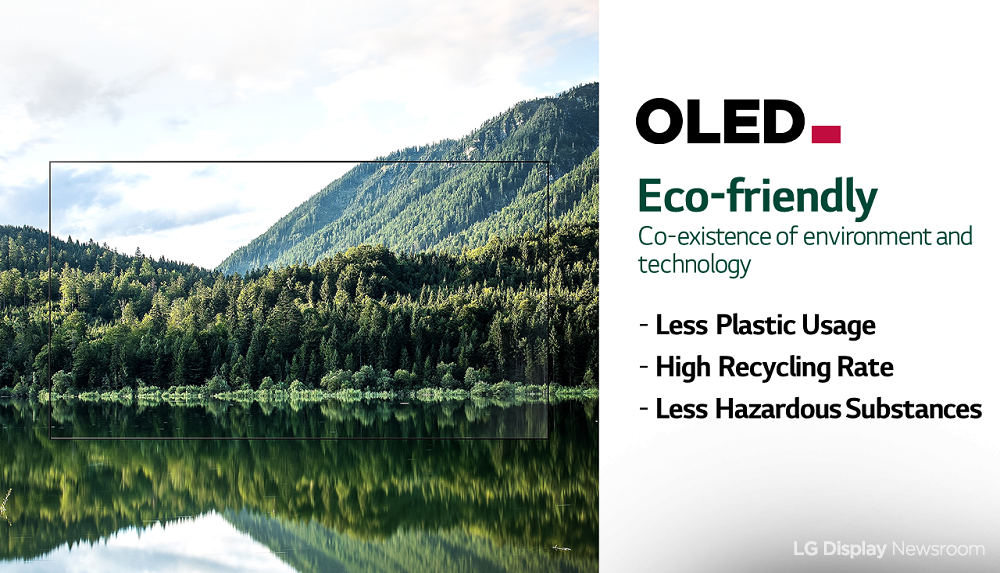
The last aspect is Eco-friendliness, in tune with the environment. Now that the importance of the environment has increased, LG Display has been considering a more eco-friendly process for every aspect of product manufacturing to disposal. LG Display’s OLED has about 10% less plastic content than existing LCD displays and boasts a high recycling rate of 90%, which even qualifies it for organic recycling. Furthermore, we are leading ESG management by developing a technology that manufactures displays without using harmful substances.

With the advent of the New Normal era, the displays in our daily lives have become closer, so we need a people-oriented display that fits in with our natural reality. LG Display’s OLED is the best Natural Reality solution, leading the global display market by presenting a new display paradigm in line with our changing society!
SID2022



